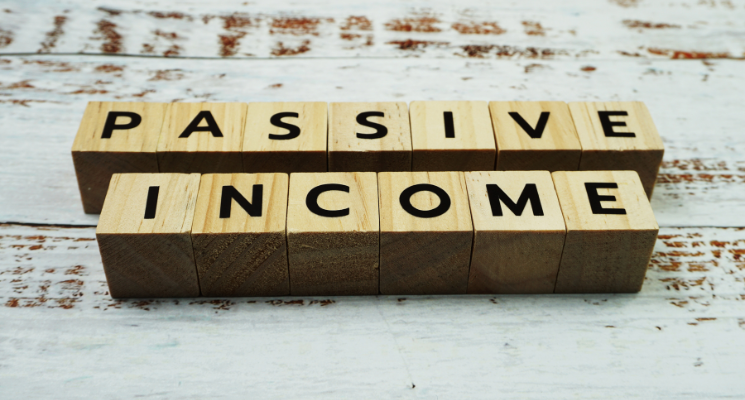When children begin their journey through school, Year One becomes one of the most formative years of their education. It’s the time when curiosity blooms, and the world around them starts to take shape in new and exciting ways. The Year One Australian Curriculum plays a vital role in shaping these early experiences, especially through the study of Humanities and Social Sciences (HASS).
This subject helps young learners understand their place in the world, their relationships with others, and how communities function. In this guide, we’ll explore what Humanities and Social Sciences mean for Year One students, how they fit into the Year 1 Curriculum Australia, and why they’re essential for developing well-rounded, thoughtful young citizens.
What are Humanities and Social Sciences in Year One?
Humanities and Social Sciences, often referred to as HASS, include the study of history, geography, and civics. In the Year One Australian Curriculum, it helps children make sense of their surroundings by learning about their families, communities, and environment.
At this stage, students begin to explore basic questions such as:
- Who am I, and where do I belong?
- What makes a place special or unique?
- How do people help and care for each other?
Through stories, pictures, classroom discussions, and creative activities, students begin to develop a sense of identity and belonging. The Year 1 Curriculum Australia ensures that these lessons are not only engaging but also connected to their daily experiences.
Building a Sense of Identity and Belonging
A core aim of the Year One Australian Curriculum in HASS is to help students understand who they are and where they come from. They learn that every family has its own story, traditions, and history. This understanding forms the foundation for empathy and respect for others.
Children start by exploring their family trees, learning about grandparents, and comparing how their lives differ from those of the past. Teachers often use photos, interviews, and hands-on activities to make learning more personal.
Connecting the Past to the Present
Students discover how daily life has changed over time. They might compare modern toys with those from decades ago or talk about how homes, schools, and transportation have evolved. This not only strengthens their historical awareness but also encourages curiosity and questioning.
These activities make students realize that history is not just about the past — it’s about understanding how change shapes the world they live in today.
Geography in the Year 1 Curriculum Australia
Geography is another key part of the Humanities and Social Sciences in the Year One Australian Curriculum. It introduces children to the idea of place, space, and environment.
At this level, students begin to identify familiar places such as their home, school, and neighborhood. They also explore natural and built features, like rivers, trees, roads, and playgrounds. Teachers use maps, pictures, and simple diagrams to show how these places connect.
Learning Through Observation
Children learn by observing their surroundings and describing what they see. They may take part in walks around the school or local community, noticing what makes each place unique. They might discuss why parks are important or how people care for the environment.
Through these experiences, they begin to develop environmental awareness, a core goal of the Year 1 Curriculum Australia. By understanding how human actions affect nature, children start building values of care, respect, and responsibility.
Understanding Families and Communities
One of the most meaningful lessons in the Year One Australian Curriculum is learning about families and communities. Children discover that while families may look different, they all share common values such as love, cooperation, and support.
In this unit, teachers encourage discussions about different family traditions, holidays, and celebrations. These conversations help children appreciate diversity and learn that there are many ways to live and belong.
Building Respect and Inclusion
This part of the curriculum promotes inclusion and understanding. Students learn that everyone contributes to the community in their own way, from teachers and shopkeepers to parents and neighbors. They also begin to see themselves as active participants in their own communities, capable of helping and making a difference.
By fostering empathy and inclusion at an early age, the Year 1 Curriculum Australia lays the groundwork for responsible citizenship later in life.
History in the Year One Australian Curriculum
History lessons in Year One are simple yet powerful. They introduce children to the concept of time and change. Students learn to use words like “past,” “present,” and “future,” helping them understand how events unfold over time.
Teachers often use personal stories, photographs, or even old household items to make history tangible. Students might compare what school looked like for their grandparents or how communication has evolved from letters to smartphones.
Developing Historical Thinking
These lessons nurture curiosity about the past. Students begin to ask questions such as “What was life like before cars?” or “How did people celebrate birthdays long ago?”
The Year One Australian Curriculum emphasizes storytelling as a key learning method. When children hear real stories from the past, they begin to see history as something alive, filled with lessons, emotions, and connections to their own lives.
Introducing Civics and Citizenship
Although formal civics education becomes more structured in later years, the Year 1 Curriculum Australia begins to plant the seeds of social awareness early. Children start learning about fairness, kindness, and cooperation.
Through classroom rules and group activities, they discover why communities need laws and leaders. They learn to respect others’ opinions, share responsibilities, and help solve problems together.
These early lessons in civics shape their understanding of community roles and personal responsibility. Students realize that they can make positive choices that impact others — whether it’s keeping the classroom clean or helping a friend.
Teaching Methods for Engaging Year One Learners
Effective teaching in Humanities and Social Sciences relies on curiosity and storytelling. The Year One Australian Curriculum encourages teachers to use practical, hands-on experiences to make learning meaningful.
Some successful strategies include:
-
Story-based learning: Using picture books and real-life stories to introduce complex ideas in simple ways.
-
Role play and dramatization: Helping children understand different perspectives by acting out community roles.
-
Field trips: Visiting local landmarks or museums to connect classroom lessons with real-world experiences.
-
Interactive discussions: Encouraging students to share their ideas, listen to others, and think critically.
These methods transform learning from passive listening to active discovery. They also help children retain information better because they connect emotionally to what they learn.
How HASS Builds Future Skills
While the content of Humanities and Social Sciences may seem simple in Year One, its impact is long-lasting. The Year One Australian Curriculum helps children develop skills that go beyond school walls.
Some of these key skills include:
-
Critical thinking: Learning to ask questions and analyze information.
-
Empathy: Understanding different cultures and perspectives.
-
Communication: Expressing thoughts clearly through speech and writing.
-
Collaboration: Working with others to achieve shared goals.
-
Ethical awareness: Learning the difference between right and wrong in social settings.
These foundational abilities will support students as they progress through higher grades and navigate real-world challenges.
Linking HASS with Other Learning Areas
The beauty of the Year 1 Curriculum Australia is how easily it integrates across subjects. For instance, a geography lesson about maps can also include math (measuring distances) and art (drawing landmarks).
History topics might link with English when students write short stories or reflections about the past. These cross-curricular connections make learning more cohesive and enjoyable. They also show children how knowledge in one subject can enhance understanding in another.
The Role of Teachers and Parents
Teachers and parents share an important partnership in helping children succeed in the Year One Australian Curriculum. Teachers create engaging lessons, while parents reinforce learning at home through simple discussions and activities.
Parents can ask questions like:
- What did you learn about your community today?
- Can you show me where your school is on a map?
- How was life different when Grandma was young?
These conversations encourage children to think critically and make connections between school lessons and home experiences.
Why Humanities and Social Sciences Matter in Year One
The Year 1 Curriculum Australia uses Humanities and Social Sciences to help students understand their world, appreciate diversity, and build strong social values. It prepares them not just for academic success but for life as thoughtful, caring citizens.
By learning about families, communities, and the environment, children gain a deeper understanding of belonging and responsibility. These lessons shape their sense of identity and inspire them to contribute positively to society.
The Year One Australian Curriculum is more than a set of academic goals. It’s a guide that helps children explore who they are, where they belong, and how they can make a difference. Humanities and Social Sciences in Year One nurture curiosity, kindness, and understanding — values that will guide them throughout life.
When teachers, parents, and communities work together to bring these lessons to life, children grow into informed, empathetic, and responsible citizens. The foundation laid in Year One becomes the stepping stone for every success that follows.







